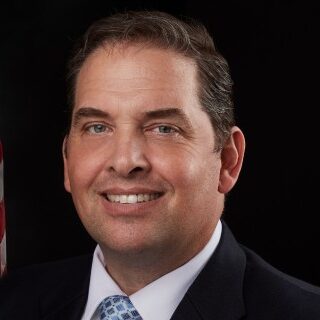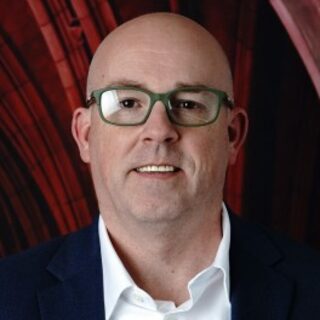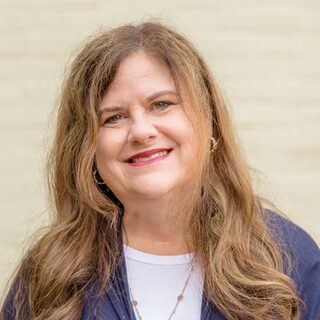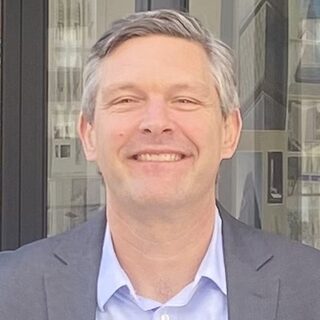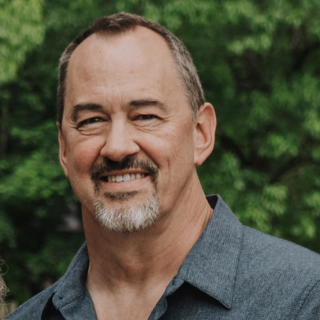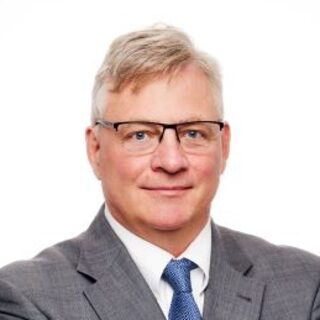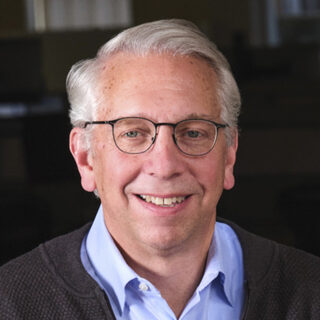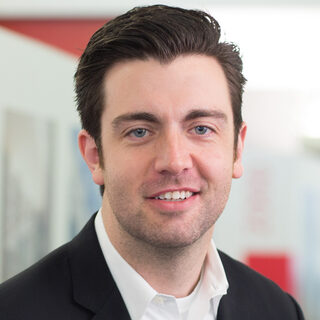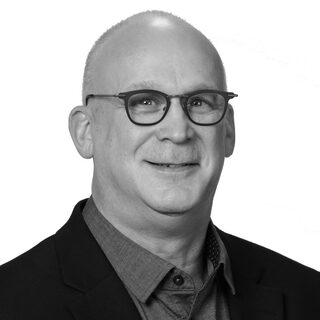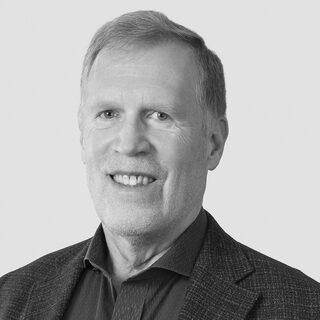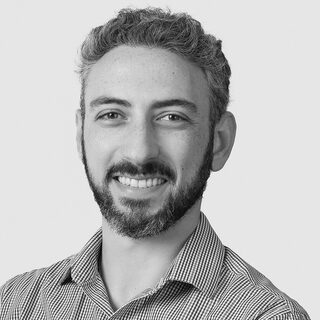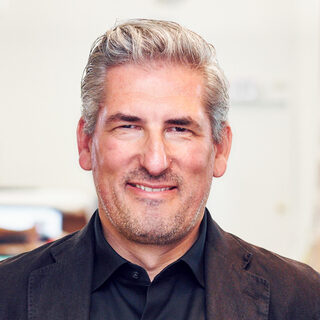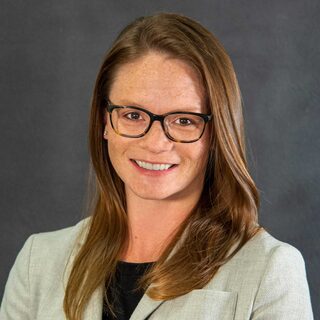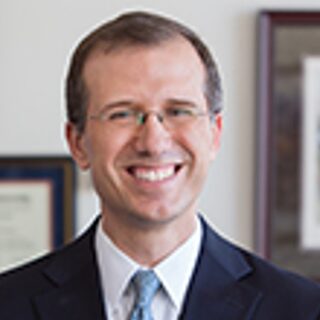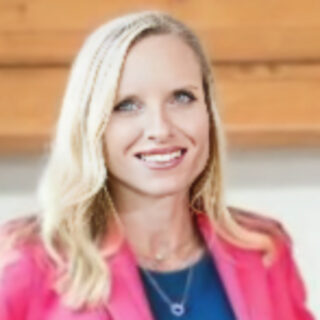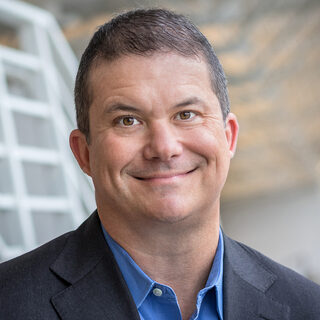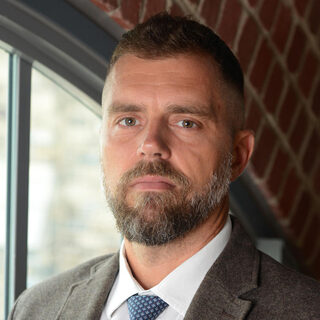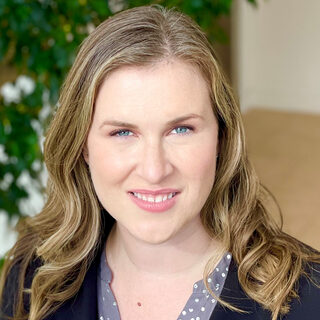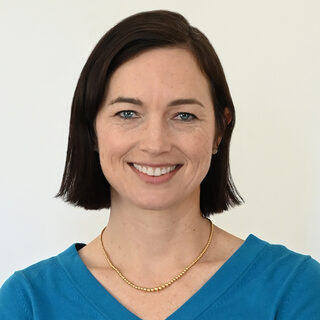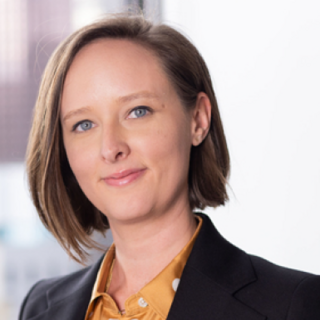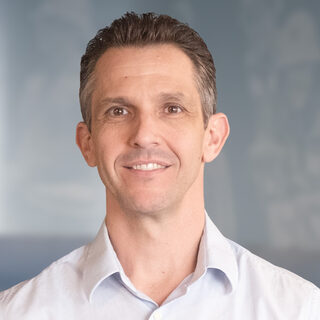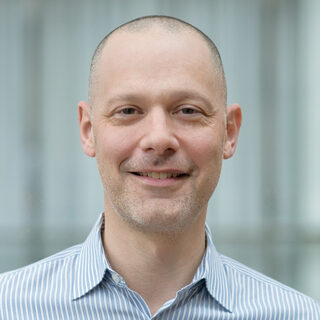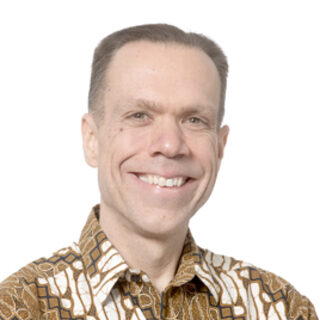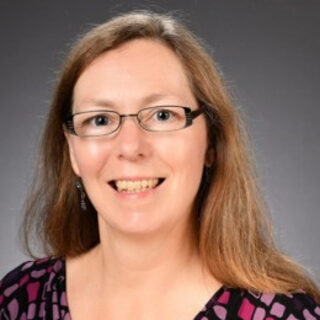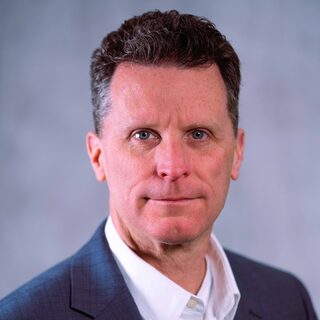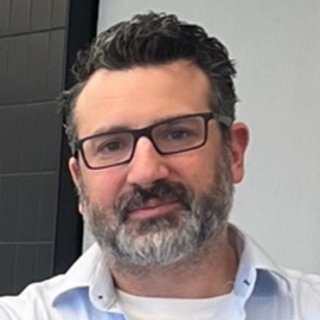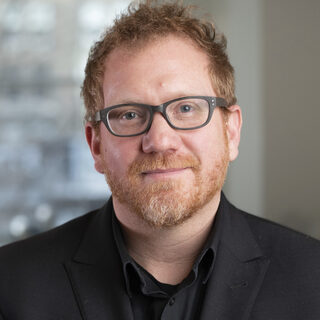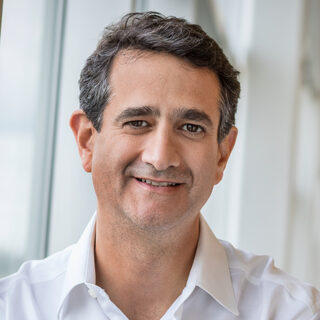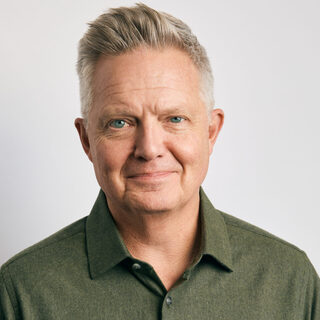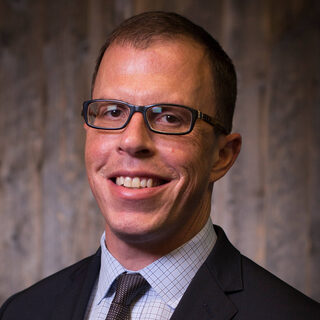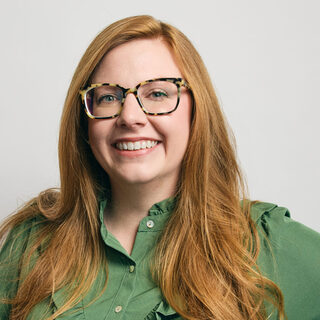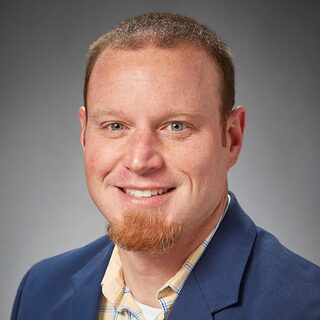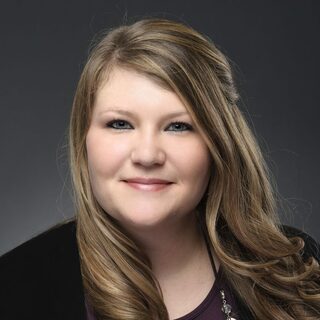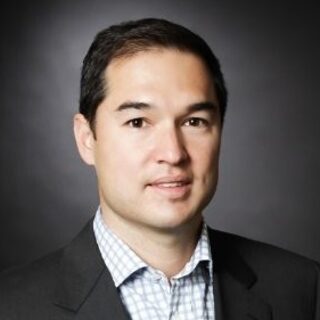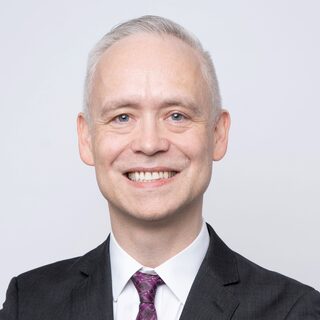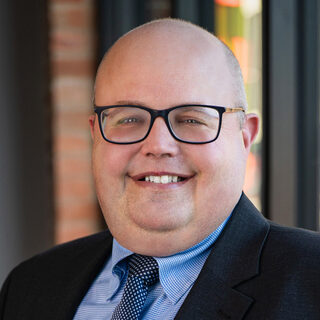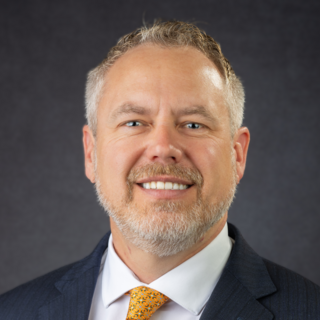Plenary Sessions
How-tos and lessons learned from 10% space reduction over seven years
For the last seven years, the University of Missouri has been writing the playbook for reducing campus space while growing programs, and here you’ll get the benefit of that hard-earned wisdom. Gerald Morgan charts the reduction of campus building area by over 750,000gsf -- nearly 10% of the university’s physical educational and general space. He provides a behind-the-scenes look into what the bold space reduction initiative accomplished, including project goals and outcomes, surprises along the way, and "succession planning" for growth without physical expansion. He details the policies and processes that have allowed for the demolition or divestment of 24 buildings to-date, saving $147 million from deferred maintenance/capital needs backlog, and reducing operation costs by $5.1 million.
| Occurs | Location |
|---|---|
Monday, Oct 6th 8:40AM - 9:05AM | Vaquero Ballroom |
Transforming academic space management for a dynamic future
In a rapidly evolving educational landscape, traditional approaches to academic space management are no longer sufficient. Hybrid learning, fluctuating enrollment patterns, and evolving pedagogical needs are challenging space utilization, cost efficiency, and student experience. This session explores the use of innovative technologies, including AI-driven space analytics and dynamic scheduling systems, to reimagine the physical environments for the new higher ed paradigm. Through case studies and data-backed insights, David Wilder highlights strategies empowering institutions to make data-informed decisions, improve operational agility, and align space planning with academic goals. He provides a forward-looking framework to navigate change, foster innovation, and create future-ready learning ecosystems.
| Occurs | Location |
|---|---|
Monday, Oct 6th 9:05AM - 9:30AM | Vaquero Ballroom |
Near-term facility strategies for rapidly changing campus priorities
The University of Pittsburgh is adapting to the rapidly changing higher education landscape by focusing on pragmatic renovations and strategic additions to address near-term campus space needs. As institutions nationwide respond to shifting funding streams and evolving student expectations, Pitt is modernizing its facilities to foster collaboration, accessibility, and sustainability. Matt Hansen illustrates this approach through a detailed case study of the Hillman Library reinvention, highlighting how ongoing renovations—such as new study spaces, technology upgrades, and improved accessibility—are positioning Pitt to meet current and future academic demands while maintaining continuous service to students and faculty. He provides valuable lessons learned to-date, and promising next steps.
| Occurs | Location |
|---|---|
Monday, Oct 6th 9:55AM - 10:20AM | Vaquero Ballroom |
Research environments: Transforming space use culture, design, and strategic management
Don’t let outdated space management practices hobble science programs – now is the time to overhaul institutional space use models and extend the productivity of existing resources to navigate the road ahead. Barbara Manley-Smith outlines a comprehensive framework to transform how research space is allocated, managed, and utilized within a university setting including policy modernization, stakeholder engagement, and a shift from space ownership to stewardship. She charts the path to launching a centralized Space Management System (SMS), tracking space usage and funding for data-driven decision-making, and rolling out key performance metrics for sustainable transparency.
| Occurs | Location |
|---|---|
Monday, Oct 6th 10:25AM - 10:50AM | Vaquero Ballroom |
Campus space utilization: The next frontier
Next generation campus utilization models must go beyond allocation, scheduling, and assignment performance metrics to focus on space impact and effectiveness in terms of mission alignment and accessibility. Chris Morett illustrates how and why buildings and spaces become detached from campus mission priorities, and how to course-correct to ensure each square foot is delivering strategic value for institutional programs and agendas. He profiles strategies for leveraging the trending concentration on space efficiency to elevate conversations, better inform decisions on where to invest limited capital, and use existing resources to drive impact.
| Occurs | Location |
|---|---|
Monday, Oct 6th 3:45PM - 4:20PM | Vaquero Ballroom |
Planning for progress: University of Connecticut’s campus redevelopment strategy
Now is the time to realign academic, capital, and master plans into a comprehensive program and move forward with confidence. Sandie Shea-Crabb and Tom Haskell profile the coordinated development framework that University of Connecticut has put in place, and the data and engagement requirements to plan for across academic units, students, faculty, and staff. They illustrate findings from an extensive review of existing real estate to optimize funding opportunities and site selection and integrate the campus experience. They demonstrate what the current NextGenCT initiative is delivering in terms of funding, planning, design, construction, and coordination to bring an adaptive campus vision to fruition.
| Occurs | Location |
|---|---|
Tuesday, Oct 7th 9:15AM - 9:40AM | Vaquero Ballroom |
Right-sizing operating models to extend campus infrastructure lifecycles
To extend the useful life of campus buildings and assets through uncertain times, now is the time to address infrastructure maintenance and realign operating models with new institutional priorities. Tim Senecaut provides results and lessons learned from Pitt State’s aggressive staff reduction and operational streamlining. He lays out strategies for success in getting buy-in for infrastructure investments, accelerating project timelines, and rolling out preventative maintenance programs. He illustrates what can be accomplished with minimal investment, improving the use of available funds, and communicating with key decision-makers to set project priorities and position institutions for long-term resilience.
| Occurs | Location |
|---|---|
Tuesday, Oct 7th 9:45AM - 10:10AM | Vaquero Ballroom |
Town Hall Knowledge Roundup
This end-of-day session is where key ideas, new developments, and findings that have been revealed over the course of the entire two-day conference (including sessions you may have missed) get clarified, expanded upon, and affirmed or debated. This is also the opportunity to get answers from industry leaders and the entire audience to specific questions on key and challenging issues.
| Occurs | Location |
|---|---|
Tuesday, Oct 7th 2:55PM - 3:40PM | Vaquero Ballroom |
Concurrent Forum Sessions
(Pre-selection is not required.)
Crafting the future: Engineering as the institutional epicenter of innovation
Engineering programs remain the critical enablers of the higher ed innovation mission, translating scientific discoveries into real-world solutions, and driving regional economic growth. In this session, presenters reveal newly emerging models for engineering facilities that support today’s rapidly evolving teaching and research needs, emphasizing flexibility, collaboration, and community engagement. They examine differentiating facility features that foster partnerships across disciplines, integrate an increasingly diverse range of sciences and shared resources, and maximize opportunities for innovation that benefit both academia and the local economy.
| Occurs | Location |
|---|---|
Monday, Oct 6th 11:10AM - 12:05PM | Vaquero E |
Tuesday, Oct 7th 1:45PM - 2:40PM | Vaquero E |
Right-sizing campus projects: Multiple case studies reveal the do's and don’ts
Whether planning a new campus, a new building, or renovating facilities, key questions arise: How large should the project be, what will it cost, and is it better to build new or renovate? Todd Griffith and Alex Wing, drawing from three case studies – a campus relocation, a utilization study of research resources, and a campus-wide laboratory space evaluation -- share best practices for determining the optimum project size for diverse campus contexts. Their process -- integrating evaluation data, programming priorities, and space utilization trends – will guide campus planners in estimating future needs and making better decisions, ensuring projects stay within budget and meet diverse campus requirements.
| Occurs | Location |
|---|---|
Monday, Oct 6th 11:10AM - 12:05PM | Vaquero C |
Tuesday, Oct 7th 1:45PM - 2:40PM | Vaquero F |
Phased progress: Balancing innovation and budget in facility transformations
The University of Pittsburgh’s Hillman Library reinvention serves as a blueprint for how campus spaces can respond to trending student preferences and institutional goals using thoughtful stakeholder engagement and a phased, budget-conscious approach. Session leaders illustrate how to productively involve students and staff to ensure spaces reflect current and future user needs — including collaborative zones, tech-driven amenities, and intuitive layouts. They provide findings on phased construction processes enabling continual refinement while keeping facilities operational and costs manageable. They profile how this model of balancing innovation with fiscal responsibility empowers institutions to adapt confidently in uncertain times.
| Occurs | Location |
|---|---|
Monday, Oct 6th 11:10AM - 12:05PM | Vaquero F |
Construction cost forecast and timing decisions for capital projects
What should owners budget for cost escalation in 2025 and beyond as the Federal Reserve continues to reduce interest rates? What pricing structure should be used to accurately estimate costs for your science and technology projects? Attend this session to get better pricing and more accurate budget figures, and better understand construction cost drivers for different science and technology projects. The Vermeulens team delivers up-to-date construction cost forecasts based on economic conditions, job creation and cost data from more than 200 projects. Using analyses of equities, GDP, construction labor markets and their national construction weather map, they illustrate regional construction pricing targets for the next two years and demonstrate bid and purchasing strategies that lock in costs and reduce risk.
| Occurs | Location |
|---|---|
Monday, Oct 6th 1:10PM - 2:05PM | Vaquero C |
Tuesday, Oct 7th 10:35AM - 11:30AM | Vaquero E |
From aging to agile: Campus capital reimagined
Asset optimization and repositioning is key to re-energizing campus life and ensuring long term resilience, but how does this process work, and what are the best practices for planning and designing for the future? Presenters survey recent case studies and distill best practices for leveraging existing campus capital at different scales, budget ranges, and use types. They highlight examples of underutilized campus assets being reinvigorated and reimagined for maximum impact to address ongoing campus and student needs. They map out a holistic planning process, an integrated design approach, and a multifaceted stakeholder engagement effort, to transform facilities into multimodal, experiential environments that meet and support strategic growth.
| Occurs | Location |
|---|---|
Monday, Oct 6th 1:10PM - 2:05PM | Vaquero E |
Tuesday, Oct 7th 11:45AM - 12:40PM | Vaquero E |
The science of place: Designing campuses that attract, engage, and inspire
There’s a new set of criteria defining successful research campuses, and those differentiators need to be reflected in master planning decisions to remain competitive into the future. Presenters profile development of Breakthrough Properties' Torrey Heights campus, a 520,000-square-foot, state-of-the-art life science development, and the next-gen tools and planning decisions that resulted in the property attracting high-value tenants and being fully leased from the outset. They highlight standout features including an amenity building, campus connectivity, and amenity-rich public plazas that create a vibrant, synergistic environment supporting innovation and recruitment. They examine data-driven design strategies encompassing site topography, tenant flexibility, energy efficiency, wellness, and long-term value.
| Occurs | Location |
|---|---|
Monday, Oct 6th 1:10PM - 2:05PM | Vaquero F |
Going electric: Princeton's low-carbon campus initiative and high-performance lab solutions
Princeton University is accelerating toward net zero greenhouse gas emissions in 2046, while also raising the bar for science building capability. The new Environmental Studies and School of Engineering and Applied Sciences buildings demonstrate a big part of the solution: transitioning from carbon-based district heating to a geo-exchange system with thermal energy storage – the second largest such system in the US. Session leaders provide an overview of Princeton’s campus strategic plan and net zero initiative, and illustrate project decisions that continue to deliver high-performance spaces -- vivaria, cleanrooms, trace metals laboratories, mass spectrometers, insectaries, and greenhouses -- in all-electric facilities. They provide findings and lessons learned to equip others in reconciling science and sustainability targets.
| Occurs | Location |
|---|---|
Monday, Oct 6th 1:10PM - 2:05PM | Vaquero G |
Tuesday, Oct 7th 11:45AM - 12:40PM | Vaquero F |
Managing risk for lab renewal: Leveraging design-build delivery for successful renovations
As campuses face increasing demand to manage deferred maintenance and the pressure to improve existing facilities for talent recruitment, delivering strategic renovations successfully has become even more critical. Leveraging the design-build delivery model can reduce risks and improve outcomes for these types of projects, especially related to budget and schedule management. Presenters illustrate the design-build advantages for tackling unforeseen conditions, understanding existing infrastructure, and managing scope and change over time. They provide lessons learned and case studies from highly technical lab renovation projects, how owners can procure with this contract type, key collaboration points, and setting shared goals.
| Occurs | Location |
|---|---|
Monday, Oct 6th 2:20PM - 3:15PM | Vaquero C |
Letter from Europe: Future narratives for research buildings and campuses
Drawing from examples in both Europe and the US, this presentation delivers lessons learned from both sides of the Atlantic, exploring attitudes and trends that define highly successful research endeavors, and what US institutions can learn from the European approach to research development. Presenters examine financing strategies and procurement, flexibility, collaboration culture, energy efficiency, site selection and technical performance in the definition of successful research endeavors, and what drives innovation. They profile evolutionary models for research building and campuses, and innovation in the spatial structures of modern working environments.
| Occurs | Location |
|---|---|
Monday, Oct 6th 2:20PM - 3:15PM | Vaquero E |
A living system for a changing campus: Building resilience with what you already have
Facilities operations and capital planning were once grounded in predictability - long timelines, steady enrollment, and stable funding. But that world is gone. Today's leaders face whiplash from shifting modalities, shrinking student populations, deferred maintenance, and increasing pressure to justify every square foot. Amid the chaos, a quiet transformation is underway. In this session, presenters illustrate how leading institutions are turning their campuses into living, responsive systems by leveraging passive WiFi data and AI to make smarter, faster decisions. Using recent case studies they offer a model for treating space not as a fixed asset, but as a dynamic engine of institutional resilience, avoiding millions in unnecessary capital costs and reclaiming underused space.
| Occurs | Location |
|---|---|
Monday, Oct 6th 2:20PM - 3:15PM | Vaquero F |
The human side of campus, infrastructure, and facility planning
This session sets out a human-centric planning and design approach to transform aging research campuses and facilities and improve talent recruitment and retention. Presenters illustrate how a clear vision supported by in-depth space data analytics can enhance health and well-being and foster a collaborative culture of innovation. They profile a Boehringer Ingelheim initiative to modernize infrastructure and operations through tactical renovations aligned with a strategic seven-year master plan, enabling program growth without new construction. They examine the latest space allocation data shaping research facility architecture and highlight criteria for more human-centric solutions.
| Occurs | Location |
|---|---|
Tuesday, Oct 7th 8:05AM - 9:00AM | Vaquero E |
Beyond the building: Transformational strategies to elevating fundraising and friendraising
In today's climate of shifting budgets, evolving student values, and enrollment pressures, higher education institutions need more than just new buildings -- they need clear, resonant stories that inspire action. This session profiles the transformation of The University of Wyoming Foundation’s Gateway Center through fundraising and friendraising – aligning the space vision with stakeholder values and equipping the university with tools to drive long-term impact. Presenters explore how forward-looking storytelling, design thinking, and strategic alignment are actively positioning a decade-old facility for a more resilient and connected future. They illustrate the use of versatile technology, tailored donor engagement, and integrated messaging to differentiate institutions and deepen stakeholder relationships in a crowded and uncertain higher ed landscape.
| Occurs | Location |
|---|---|
Tuesday, Oct 7th 8:05AM - 9:00AM | Vaquero C |
Automate and elevate: How continuous occupancy data is transforming campus culture & decision making
Navigating the competition for space on campus is more complex now than ever, and what’s needed now is objective, real-time data to guide smarter decisions. This session reveals how Montana State University leveraged continuous occupancy data to move beyond anecdotes, enabling data-driven master planning and uncovering hidden opportunities for space recapture. Session leaders demonstrate how automating space studies and fostering a culture of adaptability can transform campus operations, support academic growth, and ensure every square foot is used strategically. They deliver actionable insights to make institutional space management more efficient, responsive, and future-ready.
| Occurs | Location |
|---|---|
Tuesday, Oct 7th 8:05AM - 9:00AM | Vaquero F |
Moving forward through maximum space efficiency: VCU’s strategy & planning pilot project
The current economic climate demands that higher ed campus planners get more and better use from existing space, and this session illustrates how to identify and unlock higher levels of utilization and reduce costs within current building footprints. Presenters examine a case study from Virginia Commonwealth University where space planning processes have been transformed through real-time occupancy data. They describe the pivotal advantages for informing strategy and funding decisions, supporting academic and workplace needs, capital planning, and dynamic resource allocation. They demonstrate VCU’s leveraging of occupancy data to bring transparency to space assignments, confidently reallocate underused space, inform capital requests, enhance environments, and foster innovation.
| Occurs | Location |
|---|---|
Tuesday, Oct 7th 10:35AM - 11:30AM | Vaquero F |
Transformative campus space planning strategies for higher ed and healthcare
Rapidly evolving financial and programmatic drivers are forcing higher ed and healthcare organizations away from legacy space use practices toward a new paradigm that maximize the productivity of campus assets. Presenters examine three areas of innovation that leading institutions are now adopting: academic ecosystem mapping, rethinking space allocation and designations to increase efficiency; and the use of user profiles to align space resources with the needs of students, staff, healthcare workers, and visitors. They highlight the results that can be achieved in terms of improved operational efficiency, elevated user satisfaction, productivity, and wellbeing.
| Occurs | Location |
|---|---|
Tuesday, Oct 7th 10:35AM - 11:30AM | Vaquero C |
Growth of allied health programs during uncertain times
This presentation examines how allied health programs are adapting to changing funding models amid economic pressures, inflation, and rising tuition. Presenters evaluate the tradeoffs of new construction, facility acquisition, or renovation to optimize the productivity of limited resources. They examine how The University of Texas - Rio Grande Valley is addressing the challenge of fostering inter-professional collaboration across dispersed programs and consider whether consolidating or renovating spaces best supports growth. They outline responsive processes for assessing existing programs and facilities, creating redevelopment strategies that align with budgets, and leveraging building design to enhance community connections. They deliver key takeaways on improving efficiency, optimizing shared resources, and creating flexible planning goals that respond to evolving market and funding realities.
| Occurs | Location |
|---|---|
Tuesday, Oct 7th 11:45AM - 12:40PM | Vaquero C |



